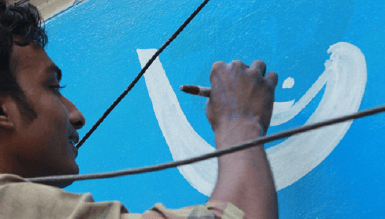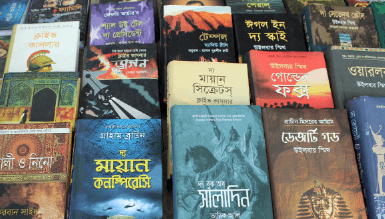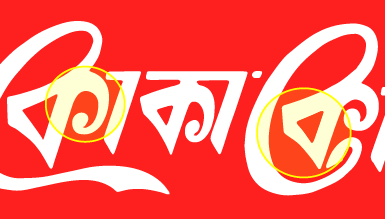
While in the West sign-painting is just a matter of nostalgia, in Bangladesh and India it is still produces the majority of signage. Typeface design has a long-standing relationship with hand-lettered sign-painting, from Jan Tschichold’s heritage in sign painting to the popularity of retro display types today. Can contemporary sign-painting be an inspiration for Bengali typeface design? This article attempts to examine that question.
In my city of Rajshahi, there are well over a dozen sign-painting businesses, painting largely on fabric banners, metal signs and building walls. Across this city I’d estimate that roughly half of all the text people encounter is hand-painted, showing how influential and pervasive it is. While much of this hand-lettered type mimics existing computer fonts, there are regular interesting exceptions. The most common embellishment distinctive to hand-lettered signs is the exaggerated forward curve at the bottom terminal of the verticals:
A few years ago a project in India called HandPaintedType attempted to create fonts based directly on sign-painting and sell them for $50 a font, but after three years it seems that it hasn’t developed very far.














